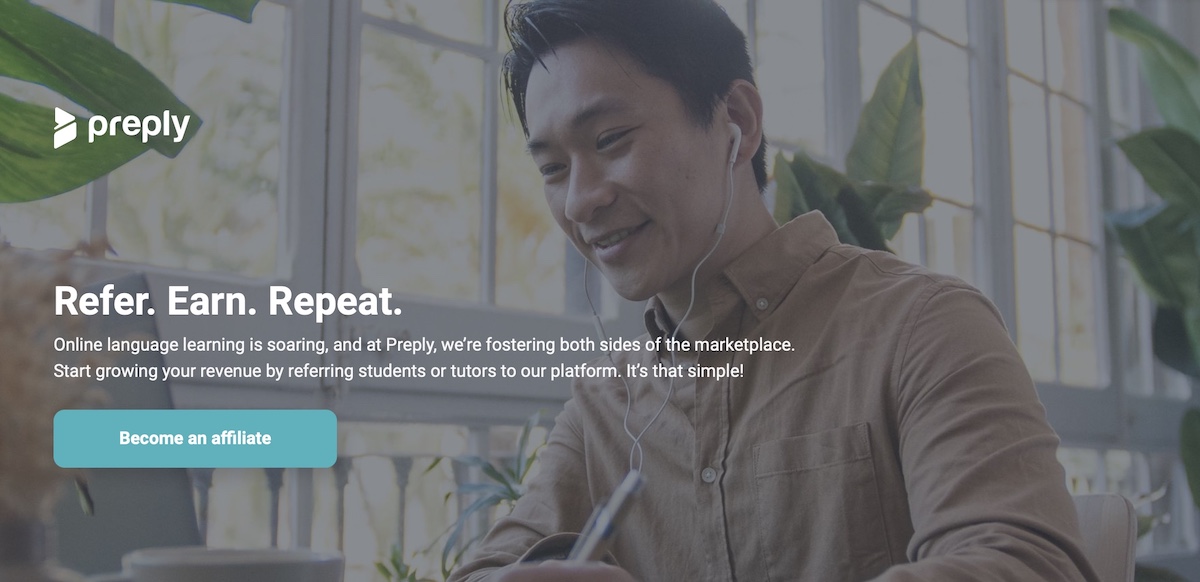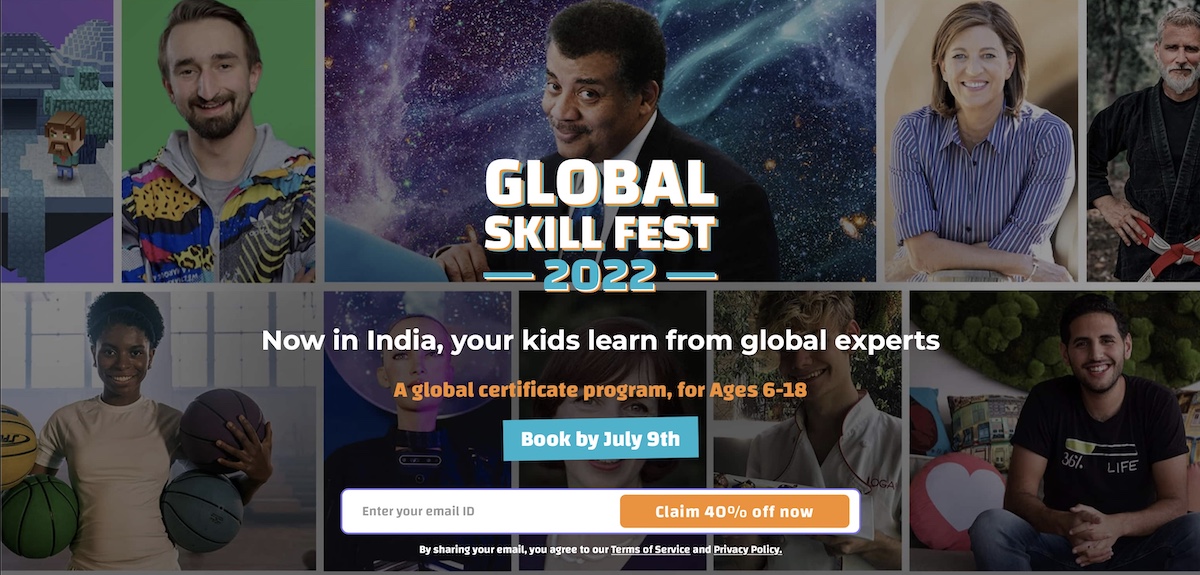
The last couple of years has been ground-breaking for education. The global pandemic made us realize how crucial it is to create possibilities for learning not only in schools but also online – from the comforts of our houses or on the road. Of course, that doesn’t mean that before 2020 the education industry was purely offline, but it was the pandemic that made online learning mandatory, at least for some time.
Whether we like it or not, online schooling is here to stay, and I’m willing to believe that winning the struggle with coronavirus won’t mark the end of online education. In fact, it should become even more robust thanks to the rapid growth of Edtech companies and startups in recent years.
The Edtech market is demanding – the competition is strong, and the urge to create truly helpful solutions isn’t sufficient. But even assuming your company already has a product it’s proud of, the job is far from done – now you need to sell it to the right people and popularize the knowledge it comes with.
The question asked in the heading – how to run a successful Edtech marketing – doesn’t come with a single answer. It depends on the type of business, its localization (online does not have to mean global), but – most importantly – the audience.
I can share a few general pieces of marketing advice with you, but the examples speak for themselves, so I made sure you can find some proven marketing strategies used by successful Edtech companies in this article, so read on.
There are a few marketing techniques you shouldn’t miss while planning the strategy for your education business – that list consists of:
In this article, I’ll focus on the last point and show you how Edtech companies use various sales promotions to acquire new customers and subscribers and keep them around for longer.
Preply is an online learning platform created for both students and tutors. How does it work? In short, students can browse through thousands of tutors to find the best person to teach them any subject of their choosing. Tutors use Preply to offer their teaching services, easily find students and earn money without leaving home.
How does Preply promote its business? Since its business model is based on commission, Preply has to do everything to communicate with people who want to learn something new – ideally for a long time. That’s why they decided to launch a referral program, a fairly popular Edtech strategy as you are about to learn.
The rules of Preply’s referral program are simple: each Preply user (students) can join the program by getting their referral link from their referral program page after logging in first. Once they have their personal link, they are free to share it with friends and family.

Important note: Preply’s referral program is targeted for students only – there’s currently no way to refer tutors.
What are the benefits of the Preply referral program?
Summary
It’s a simple yet effective double-sided referral program where everybody wins! Students already using Preply as a learning platform will get funds to buy more lessons. Newcomers can try out learning online for a fraction of the usual cost. And last but not least: Preply gets new customers and recognizability, as the existing customers are much more likely to spread the word about the platform among their friends when they know they can be rewarded.
The main difference between Preply’s referral program and their affiliate program is that the first one is meant for existing customers – only they can refer friends using a referral link they get from the platform (in this case, from Preply). On the other hand, the affiliate program is targeted at people who do not actively use Preply but have a network of contacts they can share the platform with.

Important note: Unlike in the referral program, the affiliate program participants may invite both students and tutors to join Preply. The rules are a bit different, though.
Affiliate programs work similarly to referral programs – participants get their personal links which they can share with their network. Once someone registers, makes the first purchase, or achieves any other goal, the affiliate receives the reward. Depending on the program, affiliate partners may withdraw their money once a month or a week, sometimes only after reaching a certain amount. Such a simple mechanism encourages affiliates to invest their time in bringing more than one customer which is great for budding Edtech companies.
What are the benefits of the Preply affiliate program?
Summary
The affiliate program is single-sided, which means that only the person who brings new customers to Preply earns affiliate commissions. So it’s up to them to convince people to try the platform.
Affiliate programs can be a great source of new customers, but the true challenge is to offer rewards big enough to attract capable business partners without straining the company’s budget. Keep that in mind if you ever want to launch an affiliate program.
While trying to acquire as many new customers as possible, no company should forget its existing customers. Preply didn’t make that mistake – the team came up with an idea for a campaign created specifically for active students. Instead of buying two or three lessons, Preply encourages customers to buy bigger bundles with a significant discount.
One of the offers Preply prepared, lets people buy six months of lessons for a price of four months! Such an offer is an excellent opportunity for students to stay motivated – since they can pay only for four months while getting access to half a year of learning, it would be a waste not to try it.
Chegg is an online learning platform created for high school and college students. One of the most notable features of Chegg is digital and physical textbook rentals. Since textbooks in the USA are very expensive, Chegg tries to make them more accessible by renting them out for students at a fraction of the cost, as well as allowing them to buy digital versions of textbooks instead of physical ones.
The above is why one of the most essential promotion types for them is issuing discount vouchers or free shipping vouchers. Creating coupons gets really simple with a dedicated solution, such as Voucherify.
Once created, vouchers can be assigned to specific customer segments. For example, the company may pair vouchers with all the new customers, customers who celebrate birthdays on a given day or month, customers who have been with the company for a certain amount of time, and so on.
One of the most important things for Chegg is the voucher distribution. Sending them out manually would be far from easy, especially when we’re talking about such a broad customer base. This is why Voucherify offers distribution integrations with channels like email, Braze, ActiveCampaign, Webhook, Shopify, and more.
Summary
Offering discounts is always a great way to increase interest in your offer – especially if the customers are on the fence about using your services. Discounts can be applied to physical products but also to digital ones, like online lessons, subscriptions or access to premium materials and workshops. It’s a universal solution that fits not only Edtech businesses but all businesses out there if used right.
To motivate students and make a significant impact to the educational community, Chegg decided to add its considerable mark to the Global Teacher Prize.

The Global Student Prize is a $100.000 prize for one genuinely exceptional student who stands out from the crowd with their academic achievements and other accomplishments. The award is fully funded by Chegg.
Summary
Though there aren’t many Edtech companies in the world who can spend an additional $100.000 yearly for such a prize, it is an idea worth thinking about. After all, educational technology is about making the world a bit better than before. Encouraging students to do their best and supporting them (financially, but also in any other way) is undoubtedly a step in the right direction.
Since programming became super popular, some Edtech startups and companies decided to build their offer around the demand on the market by launching online coding classes. WhiteHatJr. took the matters one step further by creating a space dedicated to children – why not start coding when you’re ten... Or eight?
The core of WhiteHatJr. offer is teaching children to code using creative and attractive means, such as video games (for example, the company paired up with Microsoft to prepare a Minecraft-based coding course for their scholars).
To promote itself, WhiteHatJr. organizes a huge event called Global Skill Fest. It’s an online workshop for children featuring internet stars, such as Neil de Grasse Tyson (famous astrophysicist), JeromeASF (one of the world’s top Minecraft players), or… Sophia the Robot. For 2,000 RP parents can sign up their children to participate in one of three thematic blocks – The Scientist, The Creator, or The Leader.

Summary
The greatest thing about such an event is that it’s a perfect opportunity for children to discover their interest in programming (or any other subject). Organizing workshops like this (online or offline) may be a great way to acquire new customers and spread the word about your Edtech company even further.
The event I’ve mentioned above starts on July 9th, and up to this point, WhiteHatJr. offers an All Access Pass with a 40% discount. However, the offer stands only until the day Global Skill Fest starts, which can be incentivizing for some parents. Such time-limited promotions and presales that come with discounts are a standard but effective marketing strategy that works not only in Edtech. WhiteHatJr. example shows, though, that there’s still value in such promotions.
GAGA (not to be confused with a dating app under the same name) is an e-learning platform for children. There are hundreds of online courses, workshops and lessons in GAGA repository, from learning letter recognition and math basics, to coding and learning foreign languages.
GAGA uses various marketing techniques to attract customers:
Since the latter works similarly to a referral program I’ve described before, I’ll focus on product bundling and free webinars.
Buying more for a more attractive price is a technique old as the hills. There’s a great chance people would buy only one product at a time, but when offered a bundle consisting of more products, they’re likely to spend more immediately. GAGA decided to incorporate this strategy into its business model – customers may buy online courses for children at up to a 20% discount.

How does it work? For a price of 864 JOD (Jordanian Dinars), GAGA customers can buy credits worth 1080 JOD (regular price). Those credits are valid for six months after the purchase, and customers may spend them for any online courses available within the platform. There are also two lower tiers, with 15% and 10% discounts, respectively.
Since online learning is still new for many parents, GAGA decided to organize free orientation sessions for all parents interested in e-lessons for their children but still on the fence about it.

During the webinar, parents can learn more about the methods and learning techniques used by GAGA tutors. It’s always a great opportunity to show parents around the platform, so they could easily find the best classes for their children.
Summary
One of the goals of Edtech companies should be to popularize knowledge and education – free orientation shortens the way customers have to go through to start learning effectively. Gifts such as webinars or trial lessons can be just the thing that could convince the unconvinced.
Referral programs, discount vouchers, events – all these methods can bring lots of customers to your company, if applied thoughtfully. Though it would probably be tough (and pointless) to include all marketing strategies in your Edtech company strategy, no doubt it’s a great idea to try at least some of those proven by the world leaders of educational technology.